Team:UCL/about
From 2014.igem.org
(Difference between revisions)
Adamdenyer (Talk | contribs) |
Adamdenyer (Talk | contribs) |
||
| Line 30: | Line 30: | ||
<h1>Project Overview</h1> | <h1>Project Overview</h1> | ||
| - | < | + | <p><img class="alignright" src="../images/fresh-work/fw-490px-Raffael_013.png" alt=" ">Azo dyes are the main synthetic colourant used in the textile industry for a wide range of products, such as clothing, upholstery, makeup, tattoo ink, and more. These dyes are well known to be a safe and stable colourant, however when they break down in guts of organisms, they take on dangerous properties. In industry, leftover dye effluent is often not properly disposed of or removed during water treatment which results in the accumulation of azo dyes in water bodies. It is at this point that they are ingested, broken down and excreted as products that have been found to be mutagenic and carcinogenic yet no effort has been made to start disposing of them more responsibly. Our project uses synthetically modified organisms that produce enzymes for the degradation and detoxification of Azo Dyes.</p> |
| - | + | ||
| - | + | ||
| - | + | ||
| - | + | ||
<p>We plan to create a complete azo-dye decolorising device in E.coli by introducing the genes for three enzymes related to the degradation of these dyes; azoreductase, laccase, and lignin peroxidase. In an industrial context, these three enzymes would work sequentially in a bioreactor of changing conditions. First, azoreductase will cleave the azo-bond (N=N) by a double reduction using NADPH as a cofactor, producing a series of highly toxic aromatic amines. Then, these compounds will be oxidised by lignin peroxidase and laccase, completing decolorisation and decreasing toxicity levels, to the point that the final products of the process are less toxic than the intact dyes themselves. The complementary action of azoreductase and lignin peroxidase will be studied in order to find out the best possible approach of sequential reaction, and this core degradation module will be extrapolated to other areas such as BioArt projects and work on algal-bacterial symbiosis, trying to set up the foundations for a synthetic ecology.</p> | <p>We plan to create a complete azo-dye decolorising device in E.coli by introducing the genes for three enzymes related to the degradation of these dyes; azoreductase, laccase, and lignin peroxidase. In an industrial context, these three enzymes would work sequentially in a bioreactor of changing conditions. First, azoreductase will cleave the azo-bond (N=N) by a double reduction using NADPH as a cofactor, producing a series of highly toxic aromatic amines. Then, these compounds will be oxidised by lignin peroxidase and laccase, completing decolorisation and decreasing toxicity levels, to the point that the final products of the process are less toxic than the intact dyes themselves. The complementary action of azoreductase and lignin peroxidase will be studied in order to find out the best possible approach of sequential reaction, and this core degradation module will be extrapolated to other areas such as BioArt projects and work on algal-bacterial symbiosis, trying to set up the foundations for a synthetic ecology.</p> | ||
</div> | </div> | ||
Revision as of 10:24, 20 June 2014
 "
"

 Azo dyes are the main synthetic colourant used in the textile industry for a wide range of products, such as clothing, upholstery, makeup, tattoo ink, and more. These dyes are well known to be a safe and stable colourant, however when they break down in guts of organisms, they take on dangerous properties. In industry, leftover dye effluent is often not properly disposed of or removed during water treatment which results in the accumulation of azo dyes in water bodies. It is at this point that they are ingested, broken down and excreted as products that have been found to be mutagenic and carcinogenic yet no effort has been made to start disposing of them more responsibly. Our project uses synthetically modified organisms that produce enzymes for the degradation and detoxification of Azo Dyes.
Azo dyes are the main synthetic colourant used in the textile industry for a wide range of products, such as clothing, upholstery, makeup, tattoo ink, and more. These dyes are well known to be a safe and stable colourant, however when they break down in guts of organisms, they take on dangerous properties. In industry, leftover dye effluent is often not properly disposed of or removed during water treatment which results in the accumulation of azo dyes in water bodies. It is at this point that they are ingested, broken down and excreted as products that have been found to be mutagenic and carcinogenic yet no effort has been made to start disposing of them more responsibly. Our project uses synthetically modified organisms that produce enzymes for the degradation and detoxification of Azo Dyes.